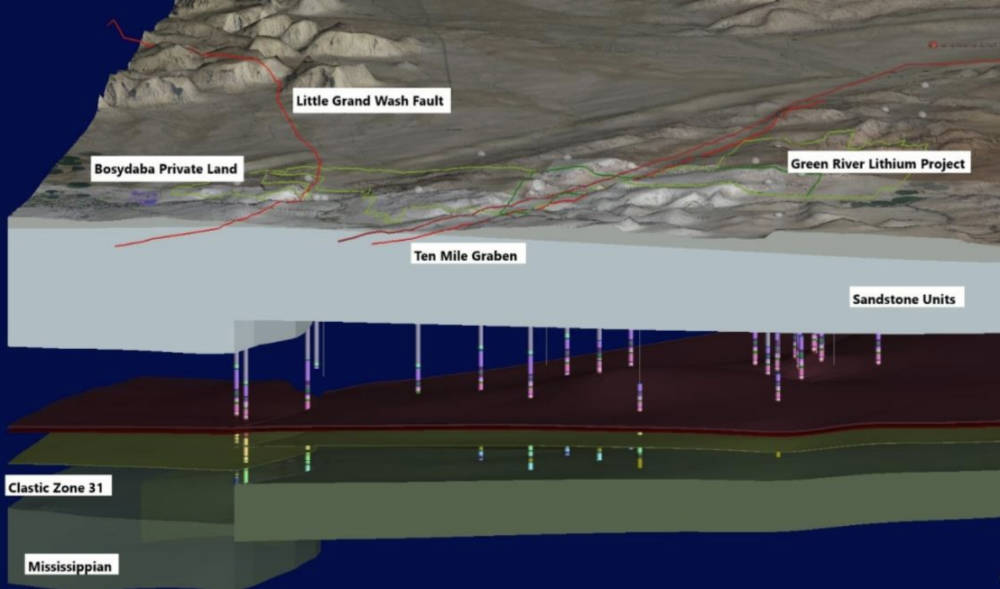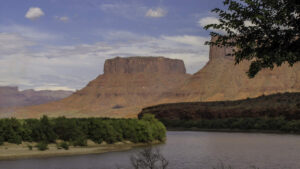Two of a pair: Anson confirms the target clastic zones at Green River are the same as those at its Paradox project

The clastic zones are likely to be continuous across the Green River and Paradox projects. Pic via Getty Images
- Anson Resources confirms that Green River shares the same target clastic zones as its Paradox project
- Target clastics are also thicker and deeper at Green River
- Drilling will also allow the company to test the target zones for their lithium content
Special Report: Resource drilling at Anson Resources’ Green River lithium project in Utah has confirmed the target clastic zones are geologically similar – just thicker and deeper – to those at its flagship Paradox project.
This has the potential to be hugely lucrative for the company as the clastic zones contribute 406,000t of contained lithium carbonate equivalent to the total resource of 1.5Mt contained LCE at the Paradox project.
Anson Resources (ASX:ASN) has previously noted there is no connectivity between the deeper clastic zones and shallow aquifers at Green River, meaning that lithium brines from the deeper clastic zones and Mississippian Units can flow without impacting the shallow aquifers.
ASN is currently carrying out resource drilling at Green River to define a maiden resource for the 106.2km2 project, which has a large, conceptual exploration target of between 2Bt and 2.6Bt of brines grading 100ppm to 150ppm lithium and 2,000ppm to 3,000ppm bromine.
Work has already indicated the lithium-rich brines could flow to the surface naturally, which would then potentially reduce operating costs by eliminating the need for mechanical pumping to extract brines from depth.

Same but thicker
The confirmation that the clastic zones at Green River consist of the same lithological unit as those found at the Paradox lithium project about 50km southeast, came from continued drilling after casing and cementing of the “intermediate” drilling section to a depth of 7,500ft at the Bosydaba#1 well.
Drilling intersected the salt layers and the clastic zones of the Pennsylvanian Formation at a depth of 6,188ft, which allowed for a higher rate of penetration compared to the overlying tight and cemented sandstones and limestones – supporting the earlier finding that there is no connection between the deeper target brine reservoirs and shallower aquifers.
Finding these units are the same indicates that the clastic horizons are continuous between the Green River and Paradox projects.
Green River also benefits from having many large geological structures such as the Ten Mile Graben, Little Grand Wash Fault, Green River Anticline and the Salt Wash Anticline, which result in the project having high pressures, increased porosity and permeability – all factors that could substantially increase the flow of lithium brines.
Adding interest, geological logs of historical oil and gas wells drilled north of the Little Grand Wash Fault show that the clastic zones are slightly deeper and thicker than those found at the Paradox project.
This drilling will also allow ASN to test the brines of both the clastic zones and the Mississippian Units at Green River for their lithium content.Once Bosydaba#1 is completed, the company expects to flow brine directly into the sample demonstration plant, which consists of both the direct lithium extraction (DLE) and the downstream purification process.
This article was developed in collaboration with Anson Resources, a Stockhead advertiser at the time of publishing.
This article does not constitute financial product advice. You should consider obtaining independent advice before making any financial decisions.
Related Topics

UNLOCK INSIGHTS
Discover the untold stories of emerging ASX stocks.
Daily news and expert analysis, it's free to subscribe.
By proceeding, you confirm you understand that we handle personal information in accordance with our Privacy Policy.








